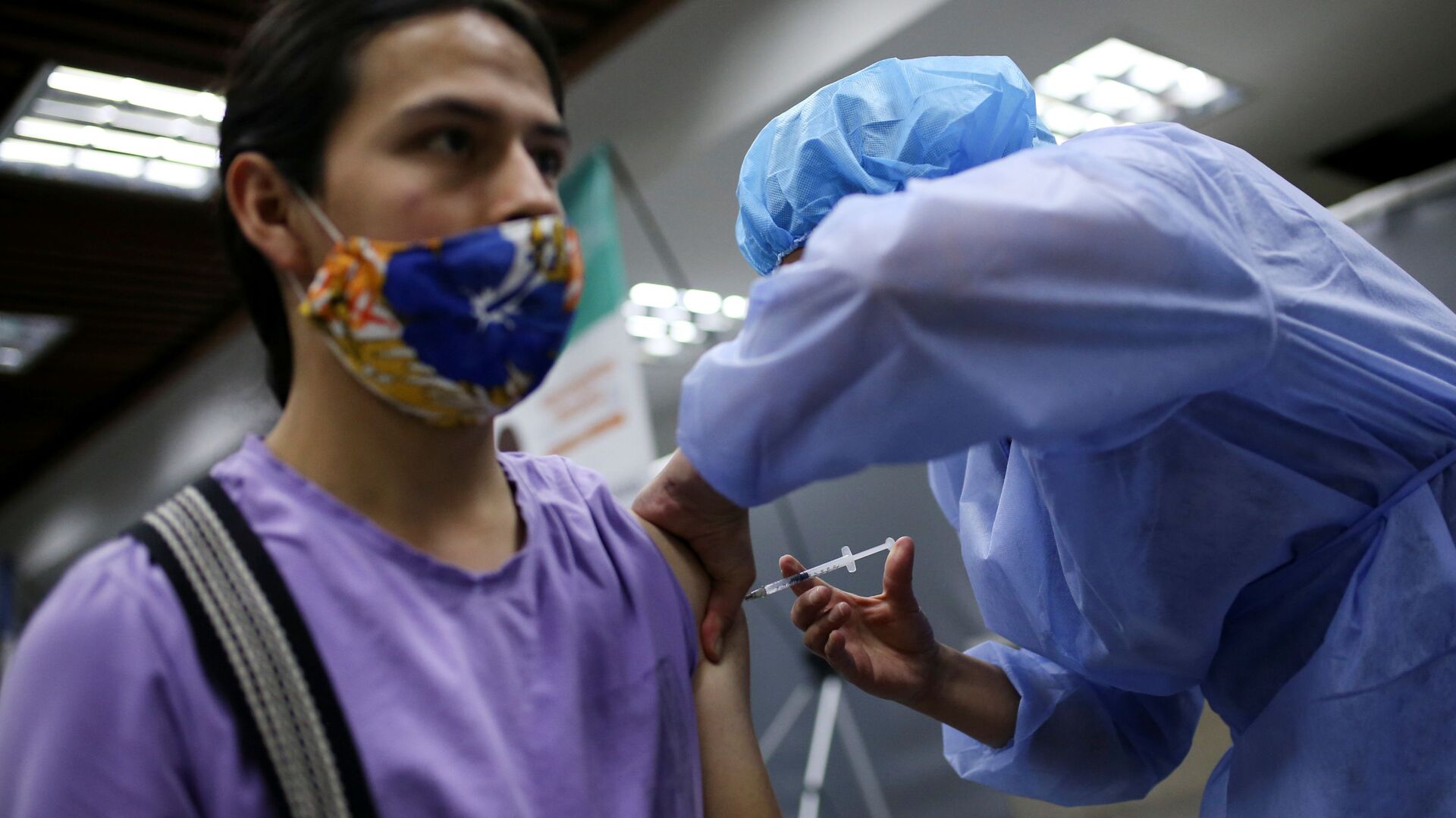https://sputnikglobe.com/20210901/who-warns-of-mu-but-where-did-the-new-covid-19-variant-come-from-1083770718.html
WHO Warns of Mu, But Where Did the New COVID-19 Variant Come From?
WHO Warns of Mu, But Where Did the New COVID-19 Variant Come From?
Sputnik International
The last coronavirus variant to cause a stir was the Lambda strain, first found in Peru in January, but it has failed to overtake the Delta variant, originally... 01.09.2021, Sputnik International
2021-09-01T18:31+0000
2021-09-01T18:31+0000
2023-05-28T15:15+0000
latin america
world
newsfeed
science & tech
society
world health organization
covid-19
coronavirus
delta variant of covid-19
world health organization (who)
https://cdn1.img.sputnikglobe.com/img/07e5/09/01/1083770462_0:161:3071:1888_1920x0_80_0_0_dc9e201a2d509e86872cb134c64fee2c.jpg
The World Health Organisation (WHO) has a new COVID-19 "variant of interest" dubbed Mu — but should we be worried?The B.1.621 variant, designated on 30 August with the 12th letter of the Greek alphabet by the UN's health body, was first identified in Colombia back in January.But 48 cases have already been identified in the UK, along with hundreds in the US, with the worldwide total at around 4,500.The WHO's weekly bulletin said early studies of the new strain's genetic code suggested that like the Beta or "South African" variant, it may be able to evade antibodies built up by vaccination or exposure to other types, but stressed that more research was needed to back that theory up.The Mu variant was spreading in Colombia and Ecuador, the WHO said, and had also shown up in Europe. But its global prevalence was still less than one in a thousand cases and was declining overall.WHO infectious diseases epidemiologist Maria van Kerkhov tweeted the latest available information on the variant.Public Health England (PHE) said last month there was "no evidence" Mu was more infectious than the Delta variant, whose spread prompted the government to put back the lifting of lockdown measures by a month out of caution.The WHO's last variant of interest, designated Lambda, is believed to have originated in Peru before spreading widely across Latin America and into North America before reaching the rest of the world. The latest PHE data on the pandemic released on Wednesday suggested the rate of new infections and deaths was falling from a second peak since the government relaxed lockdown restrictions on 23 June. Over the last week, new cases have averaged around 33,000 per day, hospitalisations over 900 per day and deaths just over 100.Just over 4.5 million people worldwide have died of the novel coronavirus in less than two years since its appearance in the Chinese city of Wuhan.
https://sputnikglobe.com/20210706/the-latin-lambda-variant-of-covid-19-what-do-we-know-so-far-1083318374.html
peru
colombia
united kingdom (uk)
Sputnik International
feedback@sputniknews.com
+74956456601
MIA „Rossiya Segodnya“
2021
James Tweedie
https://cdn1.img.sputnikglobe.com/img/07e4/08/1c/1080307270_0:3:397:400_100x100_80_0_0_7777393b9b18802f2e3c5eaa9cbcc612.png
James Tweedie
https://cdn1.img.sputnikglobe.com/img/07e4/08/1c/1080307270_0:3:397:400_100x100_80_0_0_7777393b9b18802f2e3c5eaa9cbcc612.png
News
en_EN
Sputnik International
feedback@sputniknews.com
+74956456601
MIA „Rossiya Segodnya“
Sputnik International
feedback@sputniknews.com
+74956456601
MIA „Rossiya Segodnya“
James Tweedie
https://cdn1.img.sputnikglobe.com/img/07e4/08/1c/1080307270_0:3:397:400_100x100_80_0_0_7777393b9b18802f2e3c5eaa9cbcc612.png
latin america, newsfeed, science & tech, society, world health organization, covid-19, coronavirus, delta variant of covid-19, world health organization (who), peru, ecuador, colombia, united kingdom (uk)
latin america, newsfeed, science & tech, society, world health organization, covid-19, coronavirus, delta variant of covid-19, world health organization (who), peru, ecuador, colombia, united kingdom (uk)
WHO Warns of Mu, But Where Did the New COVID-19 Variant Come From?
18:31 GMT 01.09.2021 (Updated: 15:15 GMT 28.05.2023) The last coronavirus variant to cause a stir was the Lambda strain, first found in Peru in January, but it has failed to overtake the Delta variant, originally identified in India, as the dominant form of the virus outside South America.
The
World Health Organisation (WHO) has a new COVID-19 "variant of interest" dubbed Mu — but should we be worried?
The B.1.621 variant, designated on 30 August with the 12th letter of the Greek alphabet by the UN's health body, was first identified in
Colombia back in January.
But 48 cases have already been identified in the UK, along with hundreds in the US, with the worldwide total at around 4,500.
The WHO's
weekly bulletin said early studies of the new strain's genetic code suggested that like the Beta or "South African" variant, it may be able to evade antibodies built up by vaccination or exposure to other types, but stressed that more research was needed to back that theory up.
"The Mu variant has a constellation of mutations that indicate potential properties of immune escape", the bulletin read. "Preliminary data presented to the Virus Evolution Working Group show a reduction in neutralisation capacity of convalescent and vaccinee sera similar to that seen for the Beta variant, but this needs to be confirmed by further studies."
The Mu variant was spreading in Colombia and Ecuador, the WHO said, and had also shown up in Europe. But its global prevalence was still less than one in a thousand cases and was declining overall.
WHO infectious diseases epidemiologist Maria van Kerkhov tweeted the latest available information on the variant.
Public Health England (PHE) said last month there was "no evidence" Mu was more infectious than the Delta variant, whose spread prompted the government to put back the lifting of lockdown measures by a month out of caution.
The WHO's last variant of interest, designated Lambda, is believed to have originated in Peru before spreading widely across Latin America and into North America before reaching the rest of the world.
The latest
PHE data on the pandemic released on Wednesday suggested the rate of new infections and deaths was falling from a second peak since the government relaxed lockdown restrictions on 23 June. Over the last week, new cases have averaged around 33,000 per day, hospitalisations over 900 per day and deaths just over 100.
Just over 4.5 million people worldwide have died of the novel coronavirus in less than two years since its appearance in the Chinese city of Wuhan.




